Address
304 North Cardinal St.
Dorchester Center, MA 02124
Work Hours
Monday to Friday: 7AM - 7PM
Weekend: 10AM - 5PM
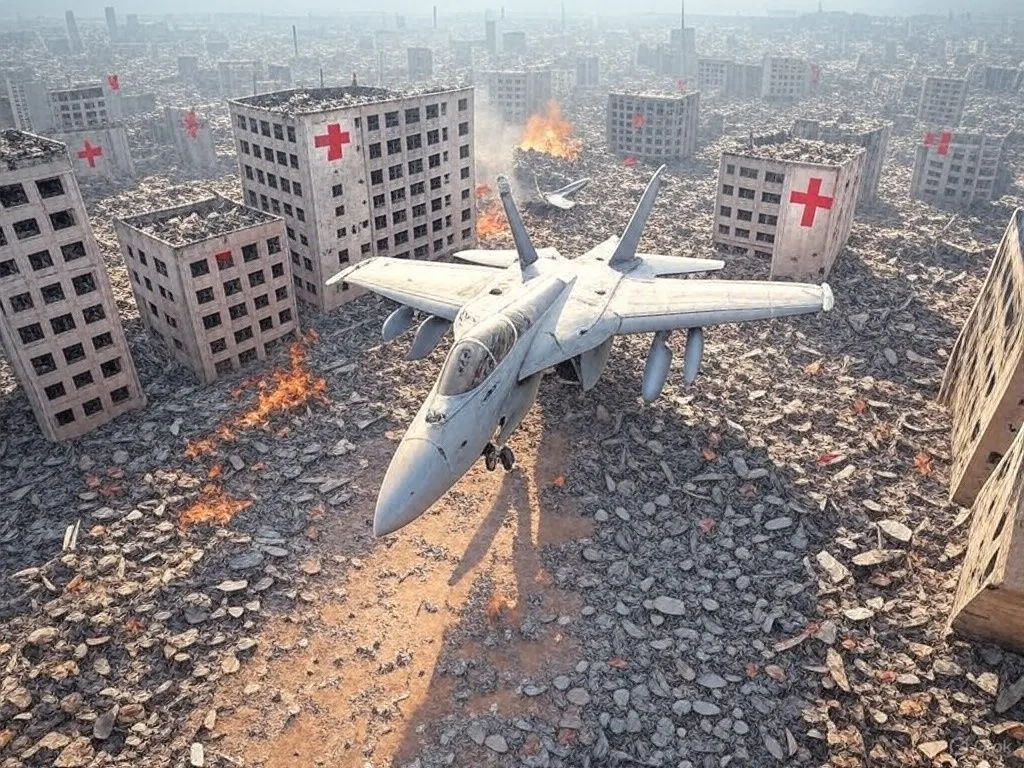
—A Prime Rogue Countdown of U.S. Hospital Bombings
There are certain things you shouldn’t have to say out loud. Don’t eat silica gel. Don’t shake babies. Don’t eat yellow snow. Don’t bomb hospitals. But somehow, across 80 years of American foreign policy, the third one never quite sunk in.
Let’s be very clear for any think tank interns, Twitter generals, or sunburnt congressional interns reading this: bombing hospitals is bad. It is not “complicated.” It is not “regrettable but necessary.” It is a war crime under international humanitarian law, including the Geneva Conventions — unless the facility is actively being used for hostile military purposes, and even then, it’s governed by proportionality and precaution. You can’t just level a cancer ward because someone “might” have parked a rocket launcher nearby.
But if you’re the United States military, these rules tend to get optional. From firebombing Dresden to flattening trauma centers in Kunduz to lighting up a cancer hospital in Saada (twice in ten days), the Pentagon has developed a peculiar pattern: dropping high explosives on people actively trying to keep other people alive.
Of course, the messaging always comes wrapped in patriotism, protocol, and PR. The official line is always that the hospital was “regrettably close” to a valid target, or being “abused” by militants, or simply vanished from the targeting matrix due to “intelligence failure.” And just like that, doctors, nurses, patients, and humanitarian staff are turned into statistics—or worse, ignored entirely.
And yet, if you listen closely—somewhere between the echoes of JD Vance’s lukewarm concerns and Pete Hegseth’s muscular justifications—you might hear another voice:
“The best ever death metal band out of Denton
Will in time both outpace and outlive you.”
—The Mountain Goats, “The Best Ever Death Metal Band in Denton”
That fictional band’s name? The Hospital Bombers. A dark joke turned prophecy. We live in the timeline where satire is autobiography, and indie rock lyrics feel like geopolitical commentary.
So with that, let’s count them down.
Ten of the most brazen, underreported, or grotesquely spun U.S. hospital bombings in modern history. Not satire. Not theory. Just freedom™, one strike package at a time.

If you’re looking for the roots of America’s hospital-targeting habit, start with Dresden. In February 1945, with World War II nearly over, the U.S. and British air forces teamed up to erase a German city that posed little-to-no military threat. Over 72 hours, waves of bombers dropped 3,900 tons of high-explosive and incendiary bombs on a largely civilian population.
The result? A firestorm that incinerated entire city blocks—including several hospitals, clearly marked with red crosses. Among them were the St. Joseph’s Hospital, Diakonissenhaus, and numerous emergency triage centers treating wounded soldiers and civilians alike. Nurses and patients were burned alive in their beds. The heat was so intense that it caused oxygen to be sucked from underground shelters.
The official justification? Dresden was a transportation hub and therefore a “legitimate” military target. But that claim has been widely debunked by historians. The bombing had little strategic value and no measurable impact on the Nazi war machine, which was already collapsing. What it did do was kill up to 25,000 civilians—in just three days.
American and British officials never faced consequences. No tribunal. No apology. Just a well-polished narrative of “liberation through fire.” The world was expected to move on, which it largely did. And so the precedent was set: if you’re wearing the right uniform and speaking the right language, obliterating a hospital doesn’t disqualify you from writing history—it qualifies you to win it.
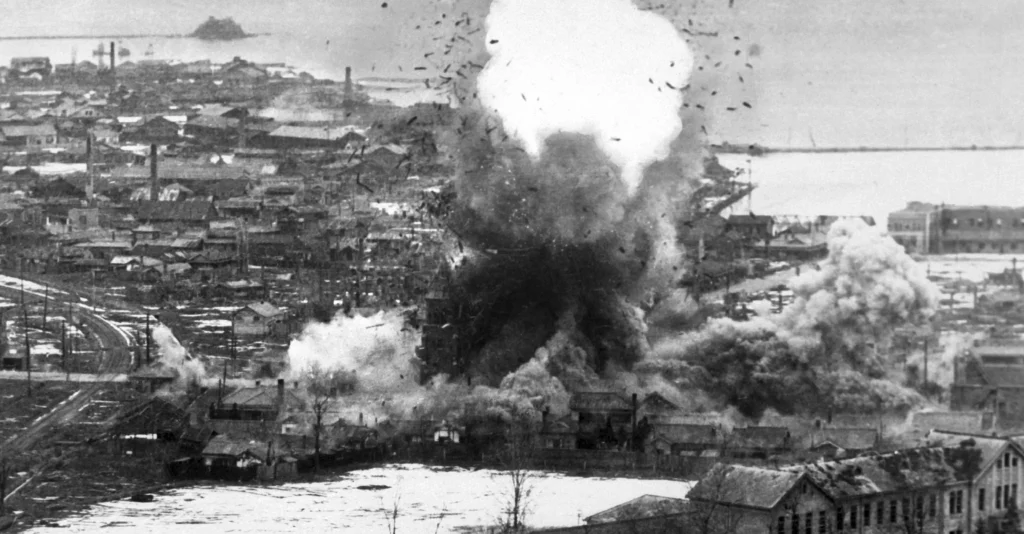
Just a few years after Dresden, the U.S. doubled down on its apparent hostility toward buildings with red crosses painted on the roof.
During the Korean War, U.S. forces launched a series of bombing raids on Pyongyang, the North Korean capital. One of the targets? A Red Cross-marked hospital. Not a secret military installation. Not a dual-use radar site. A literal Red Cross facility, designated under international law as off-limits unless being used for hostile acts. There’s no public evidence that was the case.
Eyewitness accounts from international observers and journalists at the time confirmed that hospital staff, patients, and even infants were among the dead. Pyongyang Radio (yes, propaganda-laced, but corroborated in parts by neutral observers) reported the hospital was obliterated, and photos showed massive craters where the building once stood.
The U.S. dismissed the allegations as North Korean misinformation, despite mounting evidence and Swiss Red Cross protestations. No internal investigation was ever made public. No one was held accountable. Sound familiar?
What made this one sting internationally was the symbolism: The Red Cross isn’t just a logo—it’s a legal marker of neutrality. To bomb a hospital bearing it is to spit in the face of the very notion of humanitarian law. And yet, the U.S. shrugged it off.
Moral clarity is easy when you’re the one flying at 30,000 feet. Even easier when you write the postwar narrative—and everyone else is too scared to call it what it is: a crime.
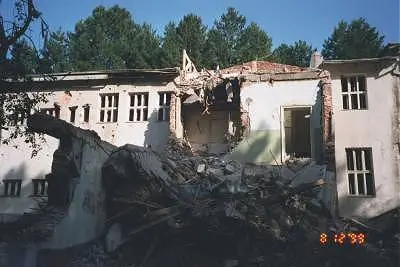
Flash forward to the era of “surgical strikes” and precision-guided munitions — the brave new world of warfare where computers were supposed to eliminate “collateral damage.” But when NATO bombed the town of Surdulica during the 1999 Kosovo campaign, that fantasy vaporized alongside a hospital full of civilians.
In June 1999, a U.S.-guided NATO missile struck a hospital in this small southern Serbian town. The death toll was officially recorded at 11 civilians, though survivors claimed the number was higher. Among the dead: patients, nurses, and a 6-year-old child. The hospital was one of the few functioning medical centers left in the region. It wasn’t near a military base. It wasn’t being used by Serb forces. It was just… there.
The Pentagon’s explanation? A “targeting error.” Serbia called it a war crime. NATO said they would investigate. Then the war ended, and so did the conversation.
This was the era of the “humanitarian war,” where bombing for peace was sold as moral righteousness. In reality, it was just another air campaign with a high civilian body count, executed by the world’s most powerful military alliance and backed, funded, and directed by the United States.
If “Oops, our bad” works for hospitals, imagine what you can get away with on the battlefield.
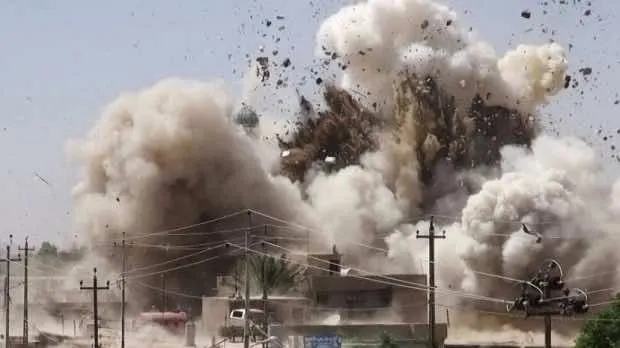
By 2017, the United States wasn’t just bombing hospitals by accident — it was bombing entire neighborhoods that just happened to contain hospitals, schools, and apartment buildings. Welcome to Mosul, where the fight against ISIS turned into a modern-day Stalingrad, minus the snow and plus a whole lot more airpower.
As part of the campaign to retake Mosul from ISIS, the U.S.-led coalition escalated its airstrike tempo dramatically. One such “precision” strike leveled a hospital complex where civilians were still sheltering. U.S. officials claimed ISIS was using the facility for operations — a familiar justification — but later reports from Amnesty International, Airwars, and on-the-ground journalists showed that hundreds of civilians were killed in a single strike on March 17, 2017.
Hospitals were often “dual-use” in Mosul — sometimes because ISIS used them as cover, but more often because no other shelter existed. People simply had nowhere else to go.
And yet, the coalition’s rules of engagement had changed. Under the Trump administration, battlefield commanders were given more autonomy and looser collateral damage thresholds. The result? More aggressive bombing. More dead civilians. Less accountability.
The Pentagon initially denied the Mosul hospital deaths, then admitted it “might have been us,” then went quiet. No one was punished. The strike was absorbed into the fog of the broader campaign, and the world moved on.
Because when the U.S. levels a hospital in the name of defeating evil, you’re supposed to say thank you.
One key target was the National Hospital, a sprawling complex that had been partially taken over by ISIS. U.S. intelligence alleged it was being used as a staging ground for fighters, which may have been partially true. What was also true: the hospital still housed civilians, including the wounded and elderly, who couldn’t evacuate.
According to Amnesty International and Human Rights Watch, the intensity and scale of the airstrikes in and around the hospital violated international law — particularly the principles of distinction, proportionality, and precaution. At one point, more than 90% of Raqqa’s buildings were destroyed, with medical facilities either deliberately targeted or obliterated by proximity strikes.
The Pentagon’s messaging was that ISIS was to blame for hiding among civilians. But hiding from airstrikes in a city with no escape routes, no running water, and no electricity isn’t “using human shields” — it’s survival.
Hospitals are not “collateral damage” when you know they’re full and bomb them anyway. That’s not “war is hell” — that’s hell without even bothering to call it war.
And yet, in the rubble, no accountability. No war crimes tribunal. Just a press release and a drone flying to its next assignment.

Let’s get one thing straight: in August 2018, the United States didn’t technically bomb a hospital in Yemen. That honor went to its close ally, Saudi Arabia, during one of the many air raids in its U.S.-backed war against Yemen’s Houthi rebels.
But here’s the twist: the bombs were American, the intel was American, the refueling was American, and the silence afterward was 100% red, white, and blue.
In the port city of Al Hudaydah, Saudi-led coalition aircraft struck a hospital and a fish market, killing at least 55 people and wounding over 100. Ambulances were hit, emergency rooms turned to charred rubble, and rescue workers described body parts scattered in the streets.
The Saudis claimed they were targeting Houthi positions. The U.N. and multiple NGOs said otherwise: there were no military targets in the vicinity, and the hospital had been operating as a civilian facility under Médecins Sans Frontières (MSF) support.
The U.S. response? A shrug, a statement urging “all sides” to reduce civilian harm, and continued arms shipments to Riyadh. Weapons sales to Saudi Arabia topped $110 billion, even as evidence of systematic war crimes mounted.
This was a masterclass in plausible deniability: when you train the pilots, provide the bombs, fuel the jets, and supply the intel, but don’t push the button yourself — apparently, you get to keep your humanitarian credentials.
That’s American exceptionalism at work. Not a war crime — a joint venture.
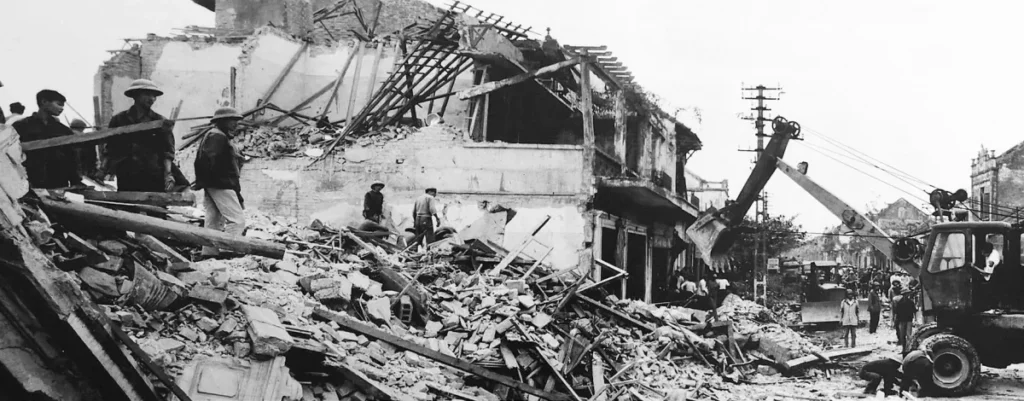
Leave it to the U.S. military to turn the birth of Christ into a fireworks show over Hanoi. During Operation Linebacker II, the Nixon administration’s final escalation in Vietnam, the U.S. unleashed twelve days of aerial bombardment over North Vietnam in December 1972 — just in time for Christmas.
One of the most devastating strikes? The bombing of Bach Mai Hospital, one of North Vietnam’s largest medical facilities. It was hit twice during the campaign. Dozens of doctors, nurses, and patients were killed. The second strike obliterated the hospital’s main surgical wing and wiped out its blood bank, rendering it nonfunctional during a wartime medical crisis.
The U.S. justification? “Mistaken identity.” Military planners claimed they were targeting a nearby radar installation or anti-aircraft batteries — which, even if true, would still violate the Geneva Conventions if they failed to distinguish the hospital’s clearly marked status.
North Vietnam called it a war crime. International observers called it barbaric. Nixon called it diplomacy.
The bombing of Bach Mai was part of a larger push to force North Vietnam back to the negotiating table. So, yes — civilians and medical staff were slaughtered in the name of peace. And it worked. The Paris Peace Accords were signed weeks later. America got to declare “peace with honor.”
If you’re keeping score at home: bombing a hospital can end a war — if you have enough planes, no shame, and a press corps trained to forget.
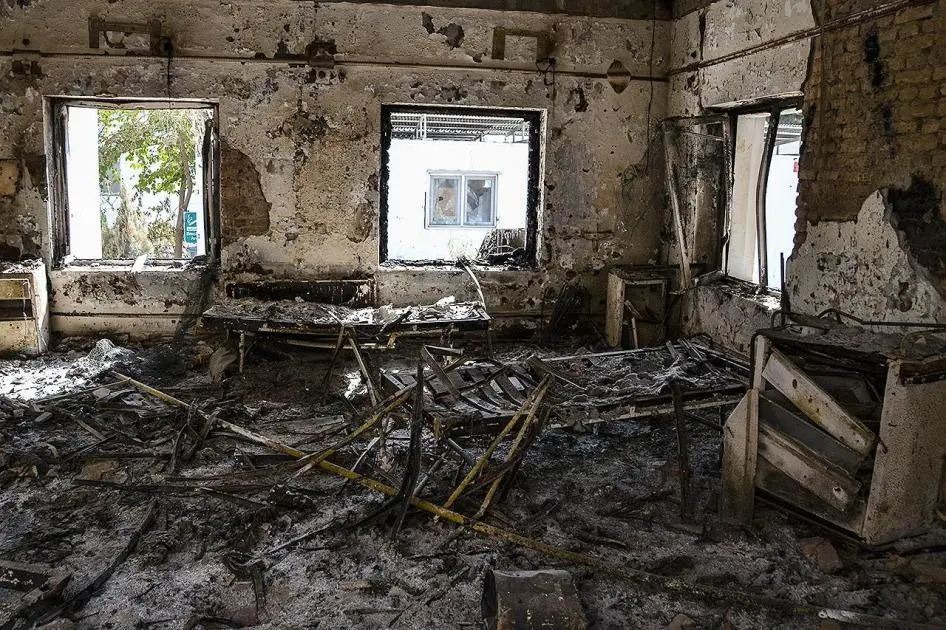
If you want the poster child for America’s “Oops, we bombed a hospital again” doctrine, look no further than Kunduz, Afghanistan, in October 2015. This was not a grey-area strike, not a case of mistaken coordinates, not even a dual-use facility.
But that didn’t stop a U.S. AC-130 gunship from circling overhead for over an hour, unleashing precision fire into the hospital’s ICU, operating theaters, and emergency wards. Patients burned alive in their beds. MSF staff were shot as they fled. A total of 42 people were killed. Survivors reported a scene straight from hell — and then had to watch the Pentagon call it a “mistake.”
The official line? Faulty intel, bad comms, and “a tragic accident.” No criminal charges. No war crimes tribunal. Just an internal slap on the wrist and a cash payout to victims’ families, as if a wire transfer could erase what happened.
MSF called it what it was: a war crime. The U.S. called it a tragedy. The difference between those two labels? Power.
Kunduz wasn’t a breakdown in the system — it was the system, laid bare: clinical, unaccountable, and armed with absolute impunity.
You’d think a cancer hospital would be safe from a military strike. You’d be wrong. In March 2025, the United States bombed Al-Rasoul Al-Atham Hospital in Saada Governorate, Yemen — not once, but twice in a ten-day span. The facility was known for one thing: oncology treatment. There were no combatants inside. Just terminal patients, doctors, and nurses.
And yet, it burned.
The U.S. claimed the target was Houthi rebel infrastructure allegedly located “nearby.” Defense Secretary Pete Hegseth doubled down, calling the strikes “necessary for national security.” Meanwhile, Vice President JD Vance privately questioned the move, reportedly concerned about its legality and whether it reflected U.S. military values — whatever those still are.
Reports from Al Jazeera, MSF, and local medical networks confirmed extensive casualties, including children undergoing chemotherapy and staff attempting to evacuate during the second strike. The building was clearly marked and well-known to both humanitarian organizations and the Pentagon. In short, they knew.
This wasn’t a fog-of-war incident. This was a knowing strike on a civilian hospital already hit days earlier, with zero warning and zero accountability. It marked a grotesque evolution in U.S. military conduct: from “unintentional” to functionally indifferent.
Public outrage was scattered. The press coverage muted. After all, Yemen’s been on fire for a decade — what’s one more war crime in a place reduced to dust?
But here’s the truth: Al-Rasoul Al-Atham wasn’t just another target. It was a test balloon — a signal of how far impunity can stretch when the enemy wears sandals and the victims die off-camera. If bombing a cancer hospital doesn’t provoke a reckoning, nothing will.
And yet, no apologies. No sanctions. Just another press release.
Hail freedom.
Let’s not pretend this list is complete.
The next hospital is already marked on a satellite map somewhere.
The next target package is already uploaded.
The next excuse is already written.
The next Pentagon spokesperson is already practicing their lines:
“We regret any loss of civilian life…”
“The facility was in proximity to a known threat…”
“We are conducting a full investigation…”
And the next victims? They’re already alive, already sick, already waiting for medicine that will never arrive — because the oxygen tank might be next to a suspected radio antenna.
That’s why this final slot on the countdown isn’t blank — it’s reserved. Because whether it’s in Yemen, Gaza, Somalia, Sudan, or Tehran, the pattern will continue. With every strike that goes unpunished, the U.S. signals not only that it can bomb hospitals, but that it will, again and again, with absolute impunity.
The greatest power on earth has developed a doctrine where mistakes never lead to trials, “precision” can flatten entire neighborhoods, and bombing a Red Cross doesn’t even get you a seat at The Hague — it gets you a defense contract extension.
This isn’t just a history of atrocities. It’s a forecast.
Because if we’ve learned anything from the past 80 years, it’s this: American bombs don’t discriminate — they just rationalize. And hospitals? They’re just soft targets with bad optics.
So keep your head down, your Red Cross covered, and your moral outrage ready.
Because the next one’s coming.